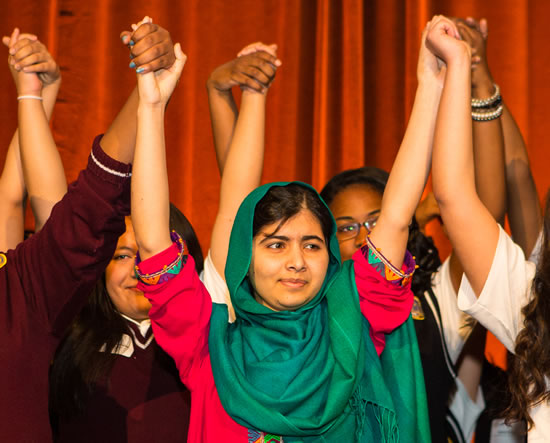BOOK REVIEW
I Am Malala: The Girl Who Stood Up For Education and was Shot by the Taliban
Reviewed by Merri Rosenberg

I Am Malala: The Girl Who Stood Up For Education And Was Shot By The Taliban
By Malala Yousafzai with Christina Lamb.
Published by Little, Brown and Company, New York, Boston, London: October 2013: 327 pp.
This should be required reading for students who cut school or are indifferent to their education.
Malala Yousafzai was a 15-year-old Pashtun girl in Pakistan who was shot in the head by the Taliban as she rode on a bus home from school. Instead of being cowed or subdued by the attack, Malala emerged even more determined to continue not only her personal quest to be educated, but to ensure that other young girls throughout Pakistan would have similar opportunities.
Not surprising that Malala, is the recipient of the National Youth Peace Prize in Pakistan in 20ll and the Amnesty International Ambassador of Conscience and the International Children’s Peace Prize this year; she’s also the youngest person ever nominated for a Nobel Peace Prize. At 16, she spoke at the United Nations, and even humbled Jon Stewart when she appeared on his show. To expand the reach of her mission to ensure that every girl who wants an education can have one, Malala has established the Malala Fund ( www.malalafund.org) to “deliver not just basic literacy, but the tools, ideas and networks that can help girls find their voices and create a better tomorrow.”
Such dedication and drive, especially given the high personal cost of her desire to be educated, reveals not only Malala’s particular strength of character, but her parents’ struggle to resist the Taliban and reactionary, often violent forces that put them at risk, too. While her mother is unschooled, her father is a schoolteacher whose work to educate both girls and boys met with strong reaction from the Taliban, which succeeded in shutting down the girls’ school and left her father in fear for his own life.
Malala offers a distinct perspective on what it was like to live under the Taliban (at 12, she wrote for the BBC Urdu, under an assumed name, about the experience). As she writes, poignantly, “First the Taliban took our music, then our Buddhas, then our history.”
Her loyalty to her people and country, and pride in their distinctive traditions—although she admits to some unease about the honor code that has proved devastating to many young girls and women—reveals the flip side of a world portrayed in “Three Cups of Tea”, invaluable for the descriptions of daily life under the Taliban’s shadow.
No matter. Malala perseveres.
She writes, “Today, we all know education is our basic right. Not just in the West; Islam too has given us this right. Islam says every girl and every boy should go to school. In the Quran it is written, God wants us to have knowledge.” Exactly. American students have no excuse, with a model like Malala. #
